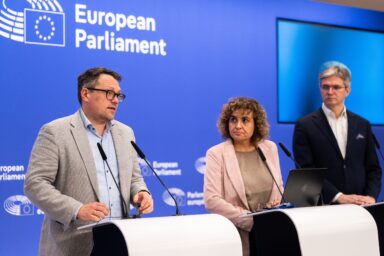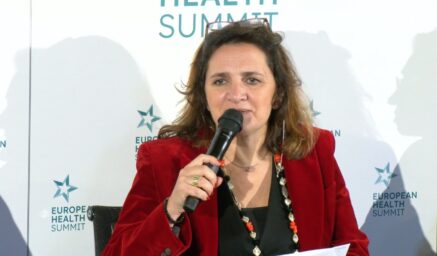The EU is supporting the digitalisation of healthcare efficiently, the European Court of Auditors found. As the European Parliament’s health committee (SANT) heard on 29 January, however, the process had created a bureaucratic maze difficult to navigate. As a result, the massive spending has not been adequately monitored.
The European Union’s support for member states’ effort to digitalise healthcare is „effective overall“, the European Public Health Committee (SANT) heard yesterday. Joëlle Elvinger, a Member of the European Court of Auditors, provided the MEPs with a special report featuring the results of the audit.
The Commission supported the digitalisation of the member states’ healthcare systems effectively overall, the report reads. The Court found that the digitalisation efforts have been helped along by the Covid-19 pandemic. Whereas the pre-pandemic EU policy was to promote digitalisation mainly through ‘soft’ instruments (recommendations and non-binding objectives), the crisis led to the strengthening of the policy framework through the adoption of binding decisions and regulations.
Between 2014 and now (as part of the programming period 2021-2027), several EU programmes have financed the digitalisation projects. Among them, the Cohesion Policy and the Recovery and Resilience Facility made provision for €2.4 billion and €13.6 billion, respectively. The Commission provided guidance to member states on the programmes.
You might be interested
Messy reporting
This is where the hitch comes into play. The digitalisation programmes financing healthcare projects in the member states were managed by different Directorates-General and implemented under different forms of management. The rules for applying for support – and for implementing the funded actions – varied between the various EU programmes.
“This made it difficult for some member states to identify the EU funds available, and created obstacles for them when applying for funding,” the Court commented on the resulting mess rather charitably.
The audit also mentioned shortcomings in the assessment mechanisms. Reporting of the Digital Decade eHealth indicator (a study examining the progress made by EU member state, Norway, and Iceland regarding the citizens’ access to their electronic health records as of the end of 2023) was shambolic. The eGovernment Benchmark (a methodology linked to European policy plans and actions, featuring mainly the Digital Decade policy programme) report does not provide information on the reasons for variations in country scores from one year to the other, rendering it basically meaningless.
As a result, neither the Commission nor most member states have a comprehensive overview of all EU funds used by each member state to digitalise its healthcare systems. It is therefore difficult to establish the extent of EU financial support in the member states. This is despite the fact that the Commission’s current financial monitoring framework provides an overview of the funds that member states use to digitalise their healthcare systems for each financing programme.
The Court recommended, quite naturally, that the Commission improve its reporting on the eGovernment Benchmark and the Digital Decade eHealth indicator, and its reporting on the use of EU funds for healthcare digitalisation.
Facing an ageing population
The SANT meeting also featured a contribution by economist Gaetan Lafortune. He presented MEPs with the OECD’s “Health at a Glance 2024” report, which provides a view on the state of European health systems recovering from the Covid-19 pandemic. The current report focuses on two key themes, addressing the health workforce shortage and extending healthy life expectancy.
According to the latest report, European countries are facing a severe shortage of healthcare staff, with a shortage of around 1.2 million doctors, nurses and midwives in the EU in 2022. The main reasons include an ageing population and the retirement of health professionals. More than a third of doctors and a quarter of nurses are over 55 years of age, further exacerbating the situation. In Italy and Bulgaria, for example, the proportion is even higher. At the same time, young people’s interest in the health professions, particularly in nursing, is declining.
Countries are partly addressing the situation by increasingly relying on health professionals trained abroad. For example, in 2023, more than 40 per cent of doctors in Norway, Ireland and Switzerland were trained outside these countries. “However, this approach raises concerns about the negative impact on countries of origin, inflicting a shortage of health workers on them,” the economist warned. Improving working conditions, increasing salaries and expanding training programmes for health workers are offered as key solutions. The use of modern technologies, including artificial intelligence, should also help optimise the work of health workers and increase their productivity.
Dementia on the rise
Another important theme of the report is extending healthy life expectancy. As presented by Lafortune, the proportion of people over 65 in the EU is expected to rise to 29 percent by 2050. Although life expectancy is increasing, more than half of the elderly suffer from chronic diseases or disabilities. The incidence of dementia is, unsurprisingly, also on the rise, even as up to 45% of it could be prevented by targeted prevention. Experts therefore stress the need to promote healthy ageing; the concept includes disease prevention, vaccination and mental health support. A healthier population could reduce the cost of health and long-term care, while simultaneously reducing the demand for healthcare staff.










